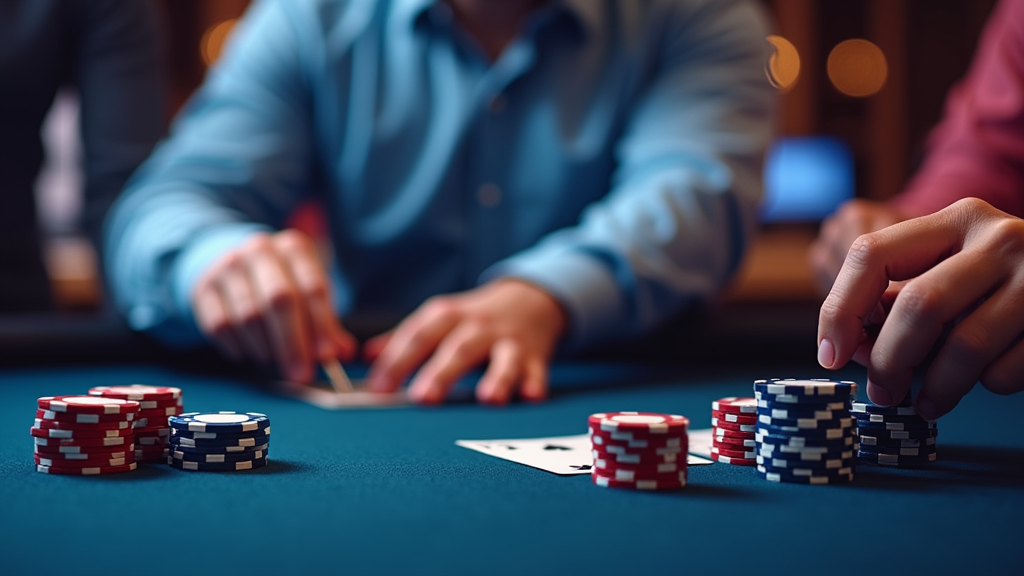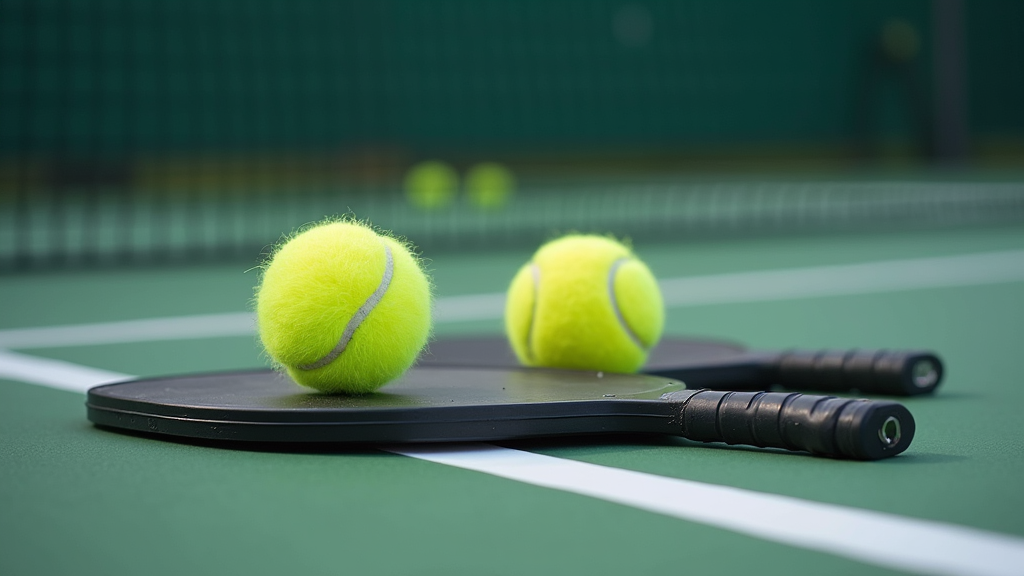Table of Contents
- Introduction
- Understanding the Basics
- Detailed Guide to Doubles Strategies
- Serving Strategy
- Lob Strategy
- Drive/Drop Combo
- Speed-Up Choice and Location
- Court Positioning
- Angles
- Controlling the Kitchen
- Communication
- Third Shot Drop
- Dinking
- Foot Shots
- Serve Depth
- Kitchen Dominance
- Volleys
- Deep Returns
- Synchronized Movement
- Keep the Ball Low
- Shot Placement
- Compact Stroke
- Patience and Precision
- Commit to Shot Selection
- Practice and Positivity
- Advanced Strategies
- Mixed Doubles Strategy
Introduction

Overview and Importance
Pickleball doubles is more than just hitting the ball back and forth; it’s a dynamic dance of strategic thinking and seamless teamwork. To truly excel in doubles, you need to master the art of coordinated play, anticipating your partner’s moves and working together to control the court. Mastering these strategies isn’t just about improving your game; it can significantly increase your win rate and overall enjoyment of the sport.
Did you know that doubles play accounts for over 70% of all pickleball games? This statistic underscores the importance of understanding and implementing effective doubles strategies. Whether you’re aiming for competitive success in tournaments or simply looking to dominate your local courts, a solid grasp of doubles strategy is absolutely crucial. It’s the key to unlocking a higher level of play and maximizing your potential.
Background
Pickleball, a sport now enjoyed by millions, has humble beginnings. Originating in 1965 on Bainbridge Island, Washington, it started as a simple backyard game created to entertain bored children. From these informal roots, pickleball has evolved into a highly competitive sport, with a growing emphasis on advanced techniques and strategic play, particularly in doubles.
Recent years have seen an explosion in pickleball’s popularity, accompanied by an increased focus on refining doubles strategies. Professional leagues and tournaments are now driving innovation, showcasing sophisticated tactics and pushing the boundaries of what’s possible on the court. These developments highlight the ever-evolving nature of pickleball and the importance of staying ahead of the curve when it comes to strategic play.
What You’ll Learn
In this guide, we’ll delve into the core concepts that underpin successful pickleball doubles play. You’ll learn about the vital importance of court positioning, how to communicate effectively with your partner, and how to make smart shot selections that put your opponents on the defensive. We’ll cover the fundamental principles that will elevate your game.
But we won’t just stop at theory. We’ll also explore practical applications, showing you how to implement these strategies in real game scenarios to gain a distinct advantage. You’ll learn how to anticipate your opponents’ moves, control the pace of the game, and dictate the flow of play. Moreover, we’ll teach you how to identify and exploit opponent weaknesses, turning their vulnerabilities into your strengths. By the end of this guide, you’ll have the knowledge and tools you need to dominate the pickleball court in doubles play.
Understanding the Basics
Fundamental Concepts
Pickleball, while seemingly simple at first glance, is a game of nuance and strategy. To truly excel, it’s crucial to grasp the fundamental concepts that underpin successful play. This begins with understanding key definitions that form the language of the game.
- Dinking:This refers to soft shots, often played from near the Non-Volley Zone (NVZ), that arc gently over the net and land within the opponent’s kitchen. Dinking is a patient game, designed to draw opponents forward and create opportunities.
- Volleying:Hitting the ball out of the air before it bounces. Volleying is prohibited within the NVZ.
- Third Shot Drop:This is often the most important shot in pickleball. It’s the shot after the serve and the return, where the serving team attempts to hit a soft, arcing shot that lands in the opponent’s kitchen, forcing them to play a dink.
- Kitchen (NVZ):Officially known as the Non-Volley Zone, the kitchen is the area within 7 feet of the net on both sides. Players cannot volley the ball while standing within this zone.
Beyond definitions, core principles are the compass guiding your decisions on the court. These principles include teamwork, strategic shot placement, and court awareness. Teamwork in doubles is paramount; effective communication and anticipation of your partner’s movements are essential. Strategic shot placement involves directing the ball to areas that are difficult for your opponents to reach or that set up advantageous situations for your team. Court awareness means constantly assessing the position of yourself, your partner, and your opponents, allowing you to anticipate plays and react effectively.
A critical aspect of pickleball strategy revolves around controlling the Non-Volley Zone (NVZ), often referred to as the kitchen. Mastering the art of dinking and preventing your opponents from controlling the NVZ can significantly increase your chances of winning. The NVZ line is your friend; use it to your advantage to control the pace and flow of the game.
Essential Components
Becoming proficient in pickleball requires a blend of physical skills and mental acuity. Several essential components contribute to a well-rounded game, starting with the foundational elements.
- Paddle Control:The paddle is your primary tool, and mastering its use is paramount. This includes developing a consistent grip, understanding how to generate spin, and controlling the power and direction of your shots.
- Footwork:Agile footwork is essential for moving quickly around the court, reaching shots, and maintaining balance. Practice shuffling, pivoting, and moving forward and backward efficiently.
- Communication Skills:In doubles, clear and concise communication with your partner is vital. Call out shots, coordinate movements, and provide feedback to ensure seamless teamwork.
Key features of your game will determine your success. These features can be broken down into primary and secondary aspects.
- Primary Aspects:
- Secondary Aspects:
- Serve Placement:A well-placed serve can put your opponents on the defensive from the start. Vary your serve’s depth, spin, and direction to keep your opponents guessing.
- Return Strategy:The return of serve is your first opportunity to gain control of the point. Aim for deep returns, cross-court angles, or soft drops into the kitchen.
- Dinking Consistency:As mentioned earlier, dinking is a crucial skill. Practice dinking consistently and accurately to control the pace of the game and create opportunities.
- Lobbing:A well-timed lob can catch your opponents off guard and force them to retreat from the net. Use lobs strategically to disrupt your opponent’s positioning.
- Speed-Ups:Speed-ups involve hitting the ball with more pace, often after a dink, to surprise your opponents and force errors. Use speed-ups judiciously to avoid unforced errors.
- Angle Shots:Directing the ball at sharp angles can pull your opponents wide and create openings for your team. Practice hitting cross-court and down-the-line angle shots.
Finally, remember that pickleball is a dynamic game, and adapting your strategy is crucial. Adjust your gameplay based on your opponent’s skill level and the court conditions. A strategy that works well against beginners may not be effective against experienced players. Similarly, windy conditions or an uneven court surface may require adjustments to your shot selection and positioning. Being adaptable is key to long-term success in pickleball.
Detailed Guide to Doubles Strategies

Serving Strategy
In doubles pickleball, your serving strategy can significantly impact the flow of the game. Avoid conservative serves that simply get the ball in play; instead, aim for power, height, and strategic placement. A well-placed serve can immediately put your opponents on the defensive.
Paddle technology allows for incorporating height and spin, making returns more challenging for your opponents. Experiment with adding extra height to your serves to achieve greater depth, increasing your scoring opportunities. A serve height of approximately 3-4 feet above the net is generally recommended for optimal effectiveness.
Lob Strategy
Lobs are an invaluable tool in doubles pickleball, particularly for disrupting opponents who are camped out at the kitchen line (Non-Volley Zone). A well-executed lob can force them to retreat, opening up the court for your team.
Ideal situations for using lobs include when you’re serving, during dinking exchanges, or when you identify a weakness in your opponents’ positioning. Try to disguise your lobs as dinks to catch your opponents off guard, making it harder for them to anticipate your shot. Aim for a lob height of around 15-20 feet to give your partner ample time to reposition and prepare for the return.
Drive/Drop Combo
The drive/drop combo is a powerful strategy for dictating the pace of the game. On the third shot, aim for a 60-70% power drive to generate topspin. This forces your opponents to hit upward, making it harder for them to attack.
Topspin drives make it easier to execute drop shots, allowing you and your partner to advance to the kitchen line. Aim for a drive trajectory angle of approximately 30-45 degrees downward to maximize the effectiveness of your topspin and force errors.
Speed-Up Choice and Location
Timing is everything when it comes to speed-ups. Look for opportunities to accelerate the pace when your opponents are off balance or when their shot patterns become predictable. Catch them by surprise to win points.
Target areas that are difficult to defend, such as the paddle side shoulder (chicken wing), the paddle side hip, or directly at the body. The ideal speed for a speed-up shot is generally between 30-40 mph, depending on your skill level and the situation.
Court Positioning
In doubles, court positioning is dynamic. Rather than sticking to fixed sides, move in sync with your partner based on the location of the ball. This ensures maximum coverage and minimizes gaps.
When covering the sideline, one player should focus on shots directed towards the edge of the court, while the other covers the middle. Maintaining a distance of 8-10 feet between partners is generally optimal for balanced coverage and effective communication.
Angles
Remember the fundamental principle: straight lines yield straight lines, and angles yield angles. Use this to your advantage to create openings and exploit weaknesses.
When facing strong dinkers, hit diagonals to target their inside foot, forcing them into uncomfortable positions. Conversely, minimize angles in your dinking returns to reduce the likelihood of aggressive angle shots from your opponents. Avoid crosscourt speed-ups, as they can leave your partner vulnerable. Aim for a 15-30 degree angle of attack for diagonal shots to maximize their effectiveness.
Controlling the Kitchen
Controlling the Non-Volley Zone (NVZ), or kitchen, is crucial for success in doubles pickleball. Use dinks strategically to draw your opponents into the NVZ, limiting their mobility and forcing errors.
Keep your dink height low, ideally 6-12 inches above the net, to make it difficult for your opponents to attack. This will help you maintain control of the point and dictate the pace of the game.
Communication
Effective communication is the cornerstone of any successful doubles team. Use clear and concise calls like “mine” or “yours” for shots down the middle to avoid confusion and collisions.
Discuss your strategy before each game and make adjustments as needed during play. Verbal cues and non-verbal signals can be invaluable for coordinating your movements and anticipating your partner’s shots.
Third Shot Drop
The third shot drop is a critical technique for transitioning from the baseline to the kitchen line. Aim your third shot drop at your opponent’s backhand to force them into a defensive position.
Ideally, the drop shot should clear the net by 1-2 feet and land within 2 feet of the NVZ line, making it difficult for your opponents to attack and giving you time to advance to the kitchen.
Dinking
Dinking is a fundamental skill for controlling the pace of the game and setting up attacking opportunities. Utilize dinks to keep the ball low, forcing your opponents to move towards the center and exposing their sides.
Cross-court dinks are particularly effective for moving opponents laterally and creating openings for more aggressive shots.
Foot Shots
Aiming shots at your opponents’ feet can be a highly effective tactic for forcing errors and setting up aggressive follow-ups. This forces them to hit the ball up.
Target a height of 1-2 feet off the ground for your foot shots to maximize their effectiveness.
Serve Depth
Use a deep serve to keep opponents away from the NVZ line and gain a positioning advantage. A well-placed deep serve can disrupt their strategy and give you more time to advance to the kitchen.
Aim for the baseline to maximize the depth of your serve and force your opponents to play from a more defensive position.
Kitchen Dominance
Dominating the kitchen means keeping your opponents away from the NVZ line and dictating the pace of play. Focus on hitting the player at the back and moving them side to side to create openings.
Use lobs to push them back if they attempt to approach the line, maintaining your control of the kitchen and forcing errors.
Volleys
Use volleys to disrupt your opponents’ timing and prevent them from setting up comfortable shots. Avoid letting dinks bounce, as this gives your opponents more time to react.
Make contact with the ball in front of your body to maximize your control and power when volleying.
Deep Returns
Returning serves deep is crucial for preventing your opponents from approaching the NVZ line and establishing a dominant position. A well-placed deep return can disrupt their strategy and give you more time to advance to the kitchen.
Aim for the baseline to maximize the depth of your return and force your opponents to play from a more defensive position.
Synchronized Movement
Move together with your partner to avoid creating gaps and ensure maximum court coverage. Coordinated movement is essential for maintaining a strong defensive and offensive presence.
Maintain a coordinated front-to-back or side-to-side movement, keeping a distance of 8-10 feet between partners for optimal coverage and communication.
Keep the Ball Low
Strive to hit shots just over the net to complicate your opponents’ returns and minimize their scoring opportunities. Keeping the ball low forces them to hit up, giving you an advantage.
Aim for a shot clearance of 6-12 inches over the net to maximize the effectiveness of your low shots.
Shot Placement
Aim shots behind your opponent to force them to move backward, making their returns more difficult. A well-placed shot behind the opponent can disrupt their balance and create openings for attacking shots.
Target a depth of 2-3 feet behind the opponent to maximize the effectiveness of your shot placement.
Compact Stroke
Employ a compact stroke technique for efficiency and quicker shot execution. A shorter, more controlled stroke allows you to react faster and maintain better control of the ball.
Minimize your backswing for faster reaction time and more consistent shot placement. Focus on short, controlled movements to maximize your accuracy and power.
Patience and Precision
Focus on strategy and precision over power, minimizing unforced errors. Maintaining control and positioning well will allow you to keep your opponents moving and create scoring opportunities.
Aim for an error rate of less than 5 unforced errors per game to maximize your chances of success. Patience and precision are key to winning consistently in doubles pickleball.
Commit to Shot Selection
Decide and commit to your shots quickly to minimize errors and maximize your effectiveness. Hesitation can lead to poor shot placement and missed opportunities.
Aim for a decision-making time of under 1 second per shot to ensure you’re reacting quickly and confidently to the situation.
Practice and Positivity
Work as a team, communicate effectively, and learn from your mistakes. A strong partnership built on mutual respect and understanding is essential for success in doubles pickleball.
Strengthen your partnership through consistent practice, focusing on communication, strategy, and teamwork. Aim for a practice frequency of 2-3 times per week to maintain your skills and build a strong rapport with your partner.
Advanced Strategies
Master advanced strategies such as the third shot drop, dinking/dropping to control tempo, poaching, and effective court coverage to elevate your doubles game. These techniques require practice and coordination with your partner.
When poaching, aim to move 2-3 feet into your partner’s side of the court to intercept shots and create scoring opportunities. Effective poaching requires quick reflexes and clear communication.
Mixed Doubles Strategy
In mixed doubles, effective communication and teamwork are even more vital. Leverage each partner’s strengths to create a balanced and effective team.
A common strategy is to have the female partner cover the middle and anticipate lobs, while the male partner focuses on the backcourt with powerful shots. However, adaptability is key. Use a mix of power and finesse shots to keep your opponents guessing. Establish clear communication signals, both verbal cues and non-verbal signals, for strategy adjustments during the game.

